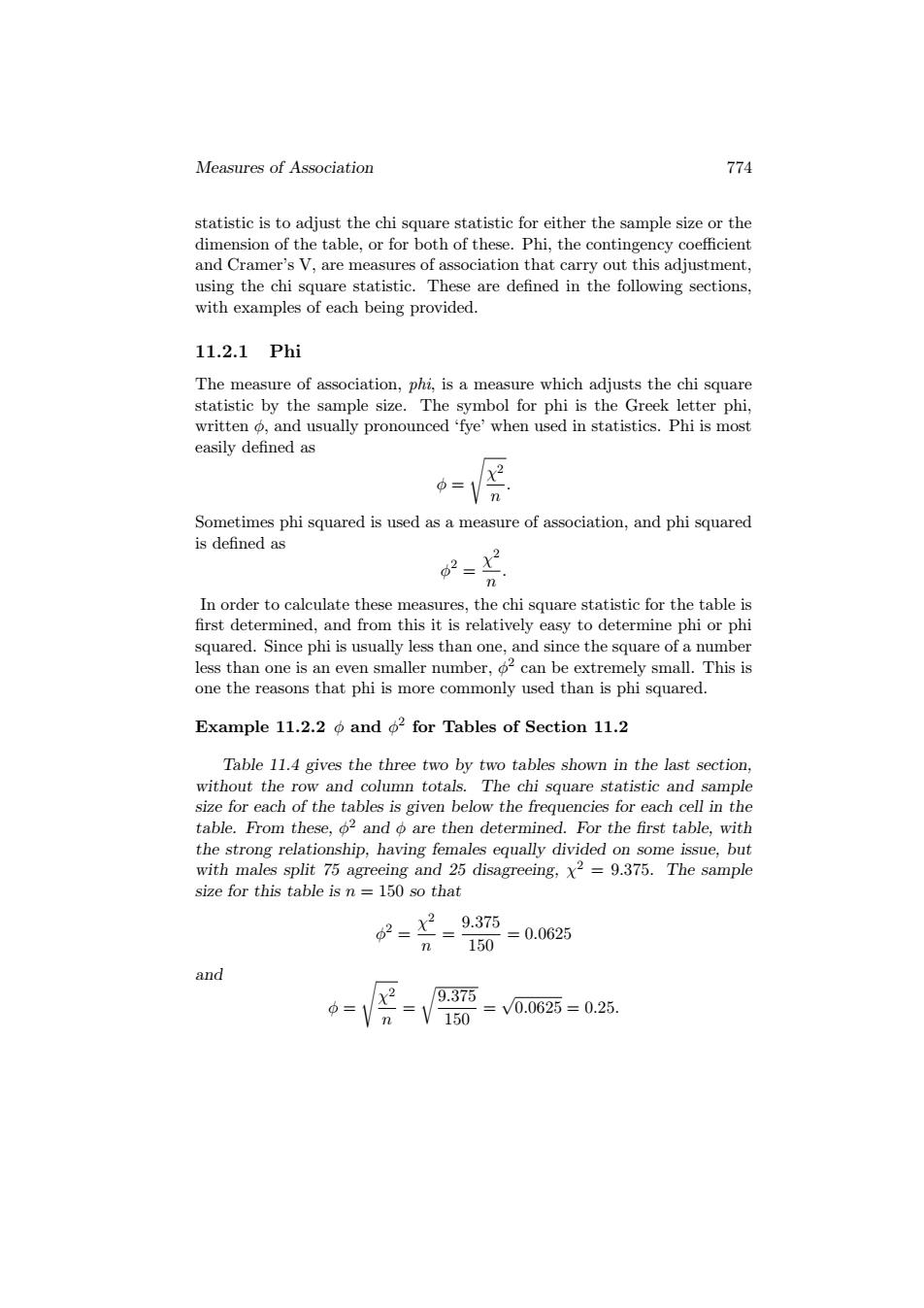正在加载图片...

Measures of Association 774 statistic is to adjust the chi square statistic for either the sample size or the dimension of the table,or for both of these.Phi,the contingency coefficient and Cramer's V,are measures of association that carry out this adjustment, using the chi square statistic.These are defined in the following sections, with examples of each being provided. 11.2.1Phi The measure of association,phi,is a measure which adjusts the chi square statistic by the sample size.The symbol for phi is the Greek letter phi, written o,and usually pronounced fye'when used in statistics.Phi is most easily defined as n Sometimes phi squared is used as a measure of association,and phi squared is defined as In order to calculate these measures,the chi square statistic for the table is first determined,and from this it is relatively easy to determine phi or phi squared.Since phi is usually less than one,and since the square of a number less than one is an even smaller number,o2 can be extremely small.This is one the reasons that phi is more commonly used than is phi squared. Example 11.2.2 and o2 for Tables of Section 11.2 Table 11.4 gives the three two by two tables shown in the last section, without the row and column totals.The chi square statistic and sample size for each of the tables is given below the frequencies for each cell in the table.From these,2 and o are then determined.For the first table,with the strong relationship,having females equally divided on some issue,but with males split 75 agreeing and 25 disagreeing,x2=9.375.The sample size for this table is n 150 so that 2=2=9.375 =0.0625 150 and φ=n /9.37币=√0.0625=0.25.Measures of Association 774 statistic is to adjust the chi square statistic for either the sample size or the dimension of the table, or for both of these. Phi, the contingency coefficient and Cramer’s V, are measures of association that carry out this adjustment, using the chi square statistic. These are defined in the following sections, with examples of each being provided. 11.2.1 Phi The measure of association, phi, is a measure which adjusts the chi square statistic by the sample size. The symbol for phi is the Greek letter phi, written φ, and usually pronounced ‘fye’ when used in statistics. Phi is most easily defined as φ = s χ2 n . Sometimes phi squared is used as a measure of association, and phi squared is defined as φ 2 = χ 2 n . In order to calculate these measures, the chi square statistic for the table is first determined, and from this it is relatively easy to determine phi or phi squared. Since phi is usually less than one, and since the square of a number less than one is an even smaller number, φ 2 can be extremely small. This is one the reasons that phi is more commonly used than is phi squared. Example 11.2.2 φ and φ 2 for Tables of Section 11.2 Table 11.4 gives the three two by two tables shown in the last section, without the row and column totals. The chi square statistic and sample size for each of the tables is given below the frequencies for each cell in the table. From these, φ 2 and φ are then determined. For the first table, with the strong relationship, having females equally divided on some issue, but with males split 75 agreeing and 25 disagreeing, χ 2 = 9.375. The sample size for this table is n = 150 so that φ 2 = χ 2 n = 9.375 150 = 0.0625 and φ = s χ2 n = r 9.375 150 = √ 0.0625 = 0.25